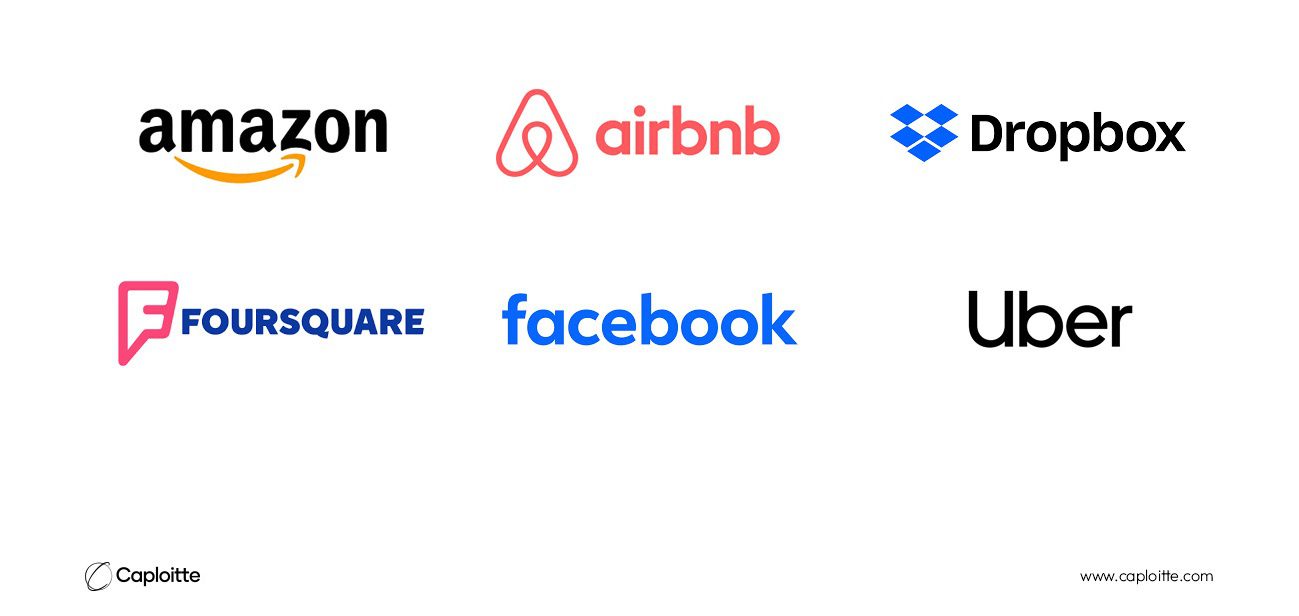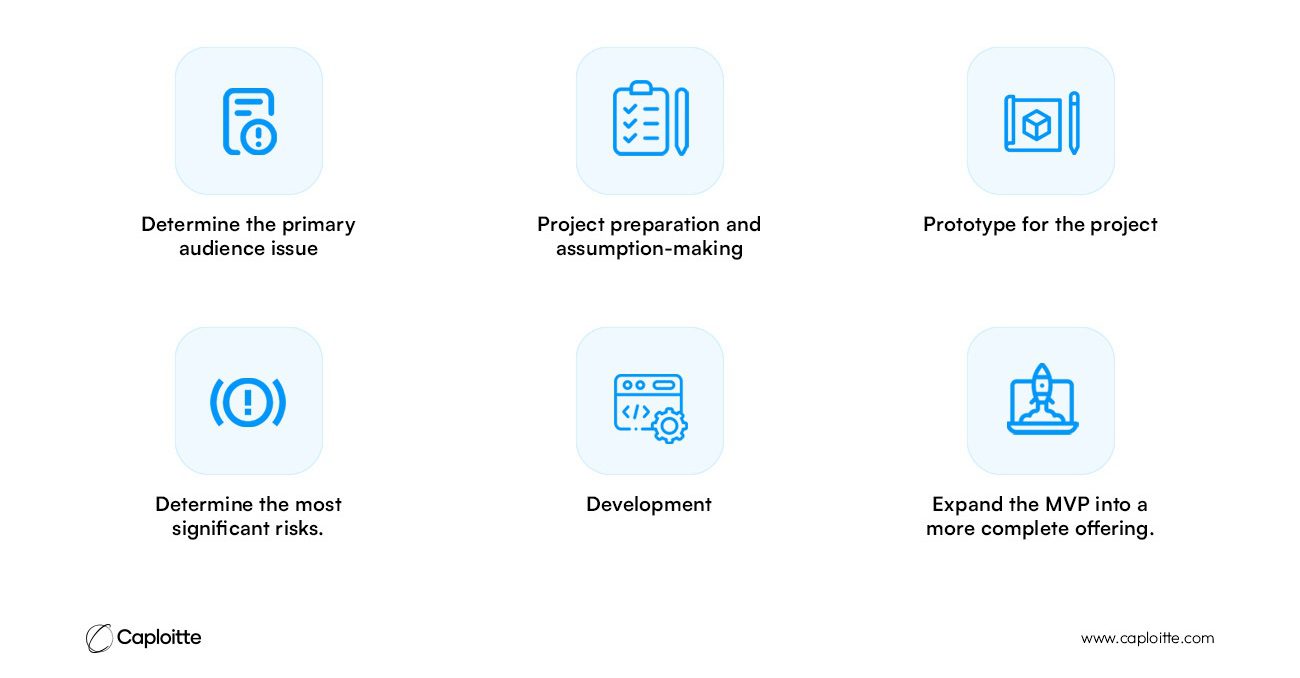Product Design And Development: “The Role of MVP (Minimum Viable Product) in Product Development”
-
Caploitte
-
29 Sep 2024
-
05 Min Read
What is a Minimum Viable Product?
MVP’s function in product development
Which Products Qualify as the Minimum Viable Product?
How to Create an MVP?
A Minimum Viable Product’s Advantages
Conclusion
Working for a startup means that you have limited resources, fair budgets, and fewer staff members, yet you still need to create value and support product growth. Although startups are by nature chaotic, there are rarely many decisions that might actually have an impact at any particular moment. Focusing on the appropriate actions at the appropriate times and minimizing waste are key components of being lean. You can reduce expenses and labor while effectively evaluating the product’s potential by putting an MVP into practice.
What is a Minimum Viable Product?

To put it simply, the most basic form of a product you have to develop in order to market it is known as the minimum viable product or MVP. It’s a product with enough functionality to draw in early adopters and prove a concept at an early stage of the development process. In software-related sectors, the MVP can help the product team in getting user input as soon as possible so that the product can be improved and iterated upon.
Agile development requires frequent product verification and iteration in response to customer feedback, which makes the MVP crucial. Market research is still necessary even with the MVP methodology and other techniques like win-loss analysis, beta programs, and focus groups that gather client input.
You have to know what issues your market needs to be resolved. The MVP method, however, does not need you to deal with every issue right away. First, address the most pressing and fundamental issues, and then solicit input. The goal is to reduce your development expenses while maximizing your learning.
MVP’s function in product development
As it offers a framework for evaluating theories on a product’s value proposition, the MVP is essential to the product development process. Without having to spend money on a feature-rich product, it enables businesses to understand the preferences and wants of their clients. Subsequently, this knowledge is applied to guide future efforts in product development.
Companies may avoid the frequent mistake of investing excessive time and money in a product before verifying that customers desire it by concentrating on the creation of an MVP.
Additionally, this strategy gives you greater freedom to react to user input and change the product as needed. An MVP can help reduce the time and resources you might otherwise devote to constructing a product that won’t succeed, in addition to enabling your business to validate a product concept without building the whole product.
Which Products Qualify as the Minimum Viable Product?

In case you’re curious about how this would actually work in practice, let’s take a look at how a few well-known firms introduced their MVPs. Several of the most well-known e-commerce and SaaS companies started once MVPs. Look them out for some ideas.
1. Amazon
There previously existed a single product marketplace on the biggest purchasing platform in the world: books. Amazon founder Jeff Bezos verified his idea for an online shop by concentrating on providing value to customers in one important area initially.
2. Airbnb
The founders of Airbnb utilized their own flat to test their idea of creating a market for online short-term peer-to-peer rentals because they lacked the capital to start a company. After building a simple website and posting images and other information on their home, they quickly attracted a number of paying visitors.
3. Dropbox
Rather than constructing an elaborate solution that would need surmounting formidable technical obstacles and several months of development, Dropbox co-founder Drew Houston developed a straightforward three-minute video showcasing the technology. Aimed at tech-savvy consumers, the movie demonstrated how simple it is to utilize the file-sharing service.
4. Foursquare
Foursquare, a location-based social network, began as an MVP that just offered check-ins and gamification incentives. The Foursquare development team started including suggestions, city guides, and other features until they had a substantial and enthusiastic user base to confirm the concept with.
5. Facebook
It’s difficult to envision the social media titanic rise. Facebook used to be a website that connected Harvard University students alone. Posting messages to shared boards, Thefacebook—also known as Facebook’s MVP at the time—was a basic platform that united students in the same classes.
6. Uber
Uber was limited to the use of iPhones and SMS when it first started in 2009, and it was only accessible in San Francisco. Uber’s MVP was sufficient to demonstrate the viability of the concept of an inexpensive ride-sharing business. Uber’s commercial growth to this point was facilitated by validated learning and data from the original app. At now, Uber has an estimated valuation of $68 billion and operates in over 80 countries worldwide.
How to Create an MVP

As part of the product development process, creating an MVP helps identify the essential aspects of a product and allows for iteration depending on user input.
There are several methods for creating MVPs. Here’s an example planning procedure in case you’re planning your own.
1. Determine the primary audience issue:
Finding an issue is the first stage in creating an MVP. It’s also important to know who is experiencing the issue. Imagine yourself in the position of your potential users. What tasks are they attempting to do, and what obstacles are they encountering? You may say that you’re assisting someone in approaching an issue from a different angle. What does your solution provide that the others don’t currently have? Method? Technology? a mix of the two? Utilizing in-product data can help you comprehend the issues that your users and clients are facing and why they have decided to utilize your solution to address them. You can continue to employ customer segmentation to establish groups based on firmographic or demographic data if you’re starting from scratch and don’t have any previous data.
2. Project preparation and assumption-making:
Choosing the essential features that an MVP will have is the biggest obstacle to overcome. This is the most crucial phase in the entire process of developing an application. What features are made available to users at an early stage will determine the application’s future success.A thorough market analysis ought to come before this phase. The goal of creating the MVP concept shouldn’t be to try to make money off of it! Scalability and prospective testing of the application should be prioritized. Should you be unable to precisely identify the set of required functions, consider developing a few MVP prototypes, the effectiveness of which will be assessed through A/B testing.
3. Prototype for the project
After the functions are defined, the design prototype will be drafted. At this point, user stories or UX/UI mockups are frequently used. In certain cases, we may go straight from conceptual work to coding, and accurately completed preparatory and design phases provide you with a high degree of assurance when estimating development expenses. Prototypes are graphical representations of your finished product. Prototypes come in two primary categories: Low fidelity refers to straightforward, figurative depictions of your finished work. Low-fidelity prototypes, like a simple wireframe mockup, are inexpensive and simple ways to replicate your broader idea, even if they are not quite true to form. high fidelity, which typically has programmed or interactive components. Although it may take longer to complete, creating a digital prototype will get you closer to a real depiction of your product. Make a high-fidelity mockup of your MVP with a design tool like Figma.
4. Determine the most significant risks:
List the business model’s risks in ascending order of high to low risk in order to verify important assumptions. This exercise aims to detect possible obstacles and failure sites at an early stage. By doing this, you reduce the possibility of failure and significant financial losses before developing a finished product.
5. Development
Usually the most expensive phase of the entire undertaking. You will need an MVP development-experienced programmer to complete it, or an entire team if the product is complicated. Remember that the MVP model is a programming approach in addition to a planning and prototyping one. To make it easy to add new features when feedback is obtained, the application’s architecture should be built with as few “moving” components as feasible and straightforward code.
6. Expand the MVP into a more complete offering:
Once your MVP has been confirmed, you can start creating your product and launching it widely. However, using the knowledge you gained throughout the validation phase is mostly what will bring you there. What other things are consumers hoping to see? Where can you add value most effectively? Now that these factors have been resolved, you may develop your product to its greatest potential. You’ll need to think about pricing strategies and income streams as you grow. The groups and roles required to develop and launch your product. Which go-to-market strategy would you employ—a top-down, sales-led strategy with live product demos, or something in between—a wholly product-led, self-checkout experience? If the former, to support a successful inbound motion, you can think about employing in R&D and marketing. If the latter, you will require account executives to close the deal and a sales force to reach out to potential customers.
A Minimum Viable Product’s Advantages

The MVP structure has implications for both teams and consumers, and it goes beyond simply bringing a product to market on a shoestring. Among these are a few of these:
1. Securing Stakeholder/Investor Buy-In
Securing funds and initiating a mobile project is frequently dependent upon enterprises gaining the support of stakeholders or investors. Developing trust in the product you’re marketing and its capacity to provide the intended result is essential to getting this buy-in. Stakeholders ultimately want to put their money into successful goods. An MVP’s main benefit is that it gives stakeholders access to a tangible product they can see and use in addition to demonstrating the viability of the idea. Moreover, if investors support the project, it won’t take months for stakeholders to see a return on their investment—the product may debut right away.
2. Early feedback from actual users.
Rather than using real-time data, your pre-launch product is usually built on assumptions about what people need or desire. An MVP gives them control over your concept. An MVP helps product and technical teams determine whether a project is worth developing and how to construct it, regardless of how much people like or dislike it.
3. Reduced sunk expenses.
The reaction to your MVP will make it obvious if a product isn’t going to succeed, saving teams a ton of time and money. Conversely, positive customer feedback also defines value, which facilitates the delivery of a lean product.
A Few Drawbacks to Think About
The reaction to your MVP will make it obvious if a product isn’t going to succeed, saving teams a ton of time and money. Conversely, positive customer feedback also defines value, which facilitates the delivery of a lean product.
In short, It enables businesses to test a product hypothesis at low resource costs. This can be especially helpful for businesses with possibly limited funding. Without having to invest in a fully functional product, businesses may gain a great deal of insight into the wants and needs of their clientele by concentrating on the creation of an MVP. Businesses can get consumer input early in the product development process by using the MVP technique. In order to ensure that future product development efforts are guided by this feedback and that the final product fulfills consumer wants and expectations, it may be quite helpful.
Conclusion
To sum up, the idea of a Minimum Viable Product (MVP) is an essential component of product management, especially for SaaS firms in their early stages. With the MVP strategy, businesses may launch a product with just enough functionality to appease beta testers and gather input for the next iterations.
The MVP development process greatly benefits from customer feedback, which offers insightful information about the wants and needs of the target audience. Product managers are essential in obtaining, analyzing, and applying this input to guide future efforts in product development. Businesses can create goods that really satisfy the requirements and expectations of their customers by concentrating on the creation of an MVP and taking consumer input into account.
Share this post:
Read More
- All
- AI
- AR
- DevOps and CI/CD
- E-commerce
- FinTech
- IoT
- Mobile Development
- Outstaffing
- Security
- SEO
- Tech Trends
- Web Design
- Web Development




